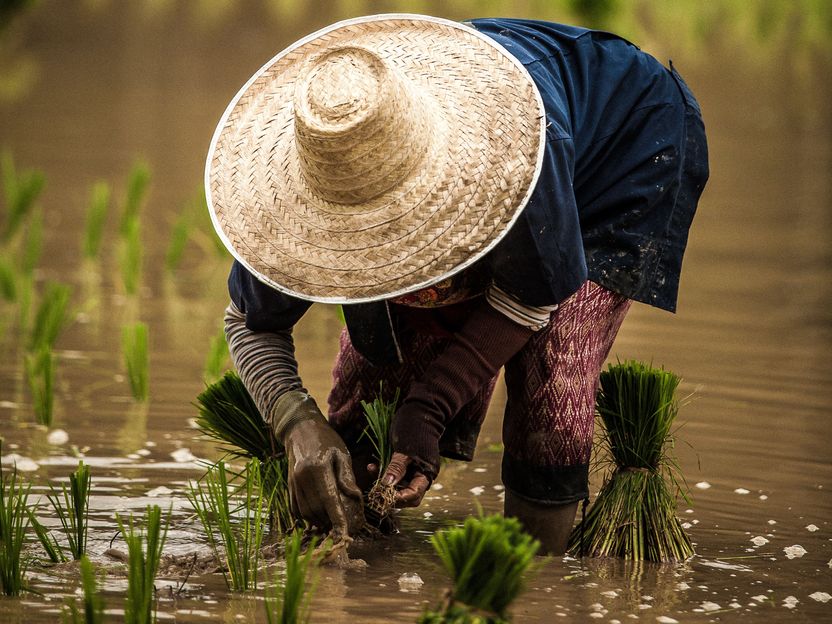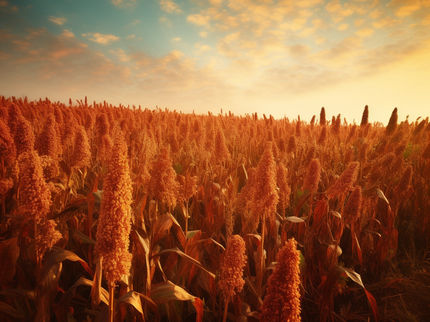Door opens to flood-resistant crops
Advertisement
Of the main food crops, only rice can currently survive the floods. Thanks to new research, that could change soon.

Photo by Eduardo Prim on Unsplash
The research, published in the journal Science, studied how other crops compare to rice when submerged in water and found that the plants tested -- a wild tomato, a cultivated tomato and an alfalfa-like plant -- share at least 68 families of genes in common that are activated in response to flooding.
Rice was domesticated from wild species that grew in tropical regions, where it adapted to withstand monsoons and floods. Some of the genes involved in that adaptation exist in other plants but have not evolved to activate when roots become flooded.
"We hope to use what we learned about rice to help activate genes in other plants that could help them survive flooding," explains study director Julia Bailey-Serres, a professor of genetics at the University of California, Riverside.
In the study, the team examined the cells that reside at the tips of the plant roots, since the roots are the first to respond to a flood. Root tips and buds are also where the main growth potential of a plant resides. These regions contain cells that can help a plant become more resistant to flooding.
Going even deeper, the team analyzed the genes in these root-tip cells to understand if and how their genes were activated when covered with water and deprived of oxygen.
"We look at how DNA instructs a cell to create a particular stress response at an unprecedented level of detail," explains one of the principal investigators, Mauricio Reynoso of UC Riverside.
"This is the first time a flood response has been analyzed in such a comprehensive way, across evolutionarily different species," added study co-author Siobhan Brady, an associate professor of plant biology at UC Davis.
The genes involved in flood adaptations are called augment-regulated submerged families (SURFs). "Because evolution separated ancestors from rice and these other species about 180 million years ago, we didn't expect to find 68 SURFs in common," admits co-author Neelima Sinha, a professor of plant biology at UC Davis.
The study was an international collaboration funded by the National Science Foundation's Plant Genome Research Program. Researchers from UC Davis, as well as from Emory, the National University of La Plata, in Argentina, and the University of Utrecht, in Holland, participated.
Although SURFs were activated in all plants during flood experiments, their genetic responses were not as effective as in rice. The species of wild tomato that grows in desert soil withered and died when it was flooded.
Climate change also leads to periods of excessive drought, and separate efforts are also being made to examine the resilience of crops to such conditions. However, Bailey-Serres points out that flood responses are understudied compared to drought, making this work even more important.
The group is now planning additional studies to improve the survival rates of plants that currently die and rot from excess water.
This year is not the first in which excessive rains have prevented farmers from planting crops such as maize, soybeans and alfalfa. The floods have also damaged the quality of the crops they were able to grow. As the climate continues to change, the trend of heavy rains and floods that destroy crops is likely to continue. Without efforts to ensure that our crops adapt, the security of the world's food supply is at risk, the authors warn.
Imagine a world where children don't have enough calories to develop," suggests Bailey-Serres. "We, as scientists, have the urgency to help plants withstand flooding, to ensure food security for the future.
Note: This article has been translated using a computer system without human intervention. LUMITOS offers these automatic translations to present a wider range of current news. Since this article has been translated with automatic translation, it is possible that it contains errors in vocabulary, syntax or grammar. The original article in Spanish can be found here.























































